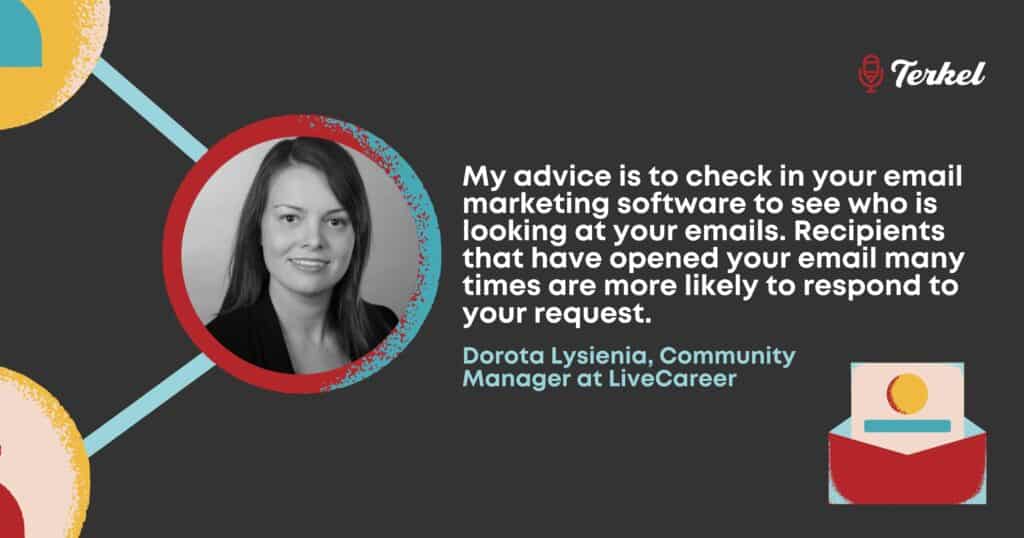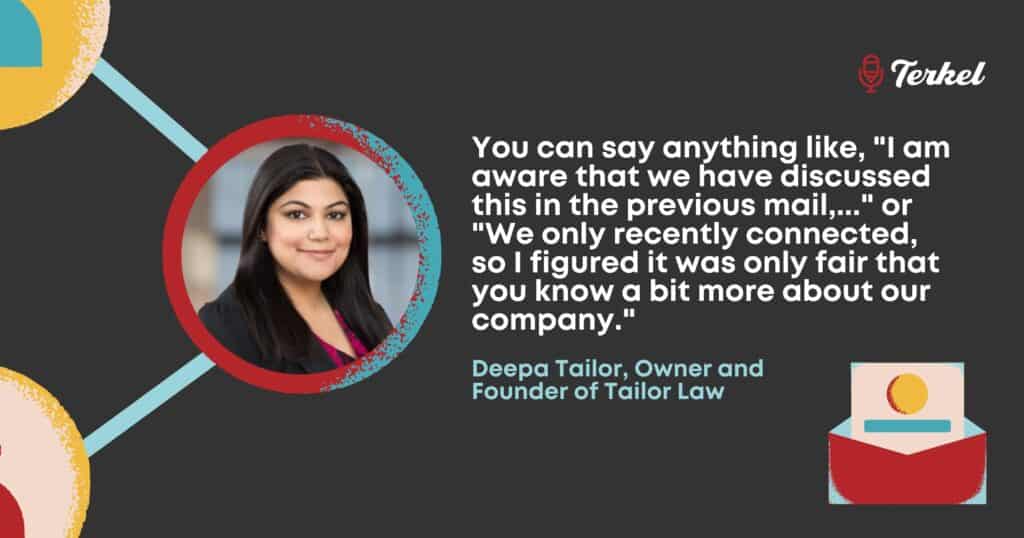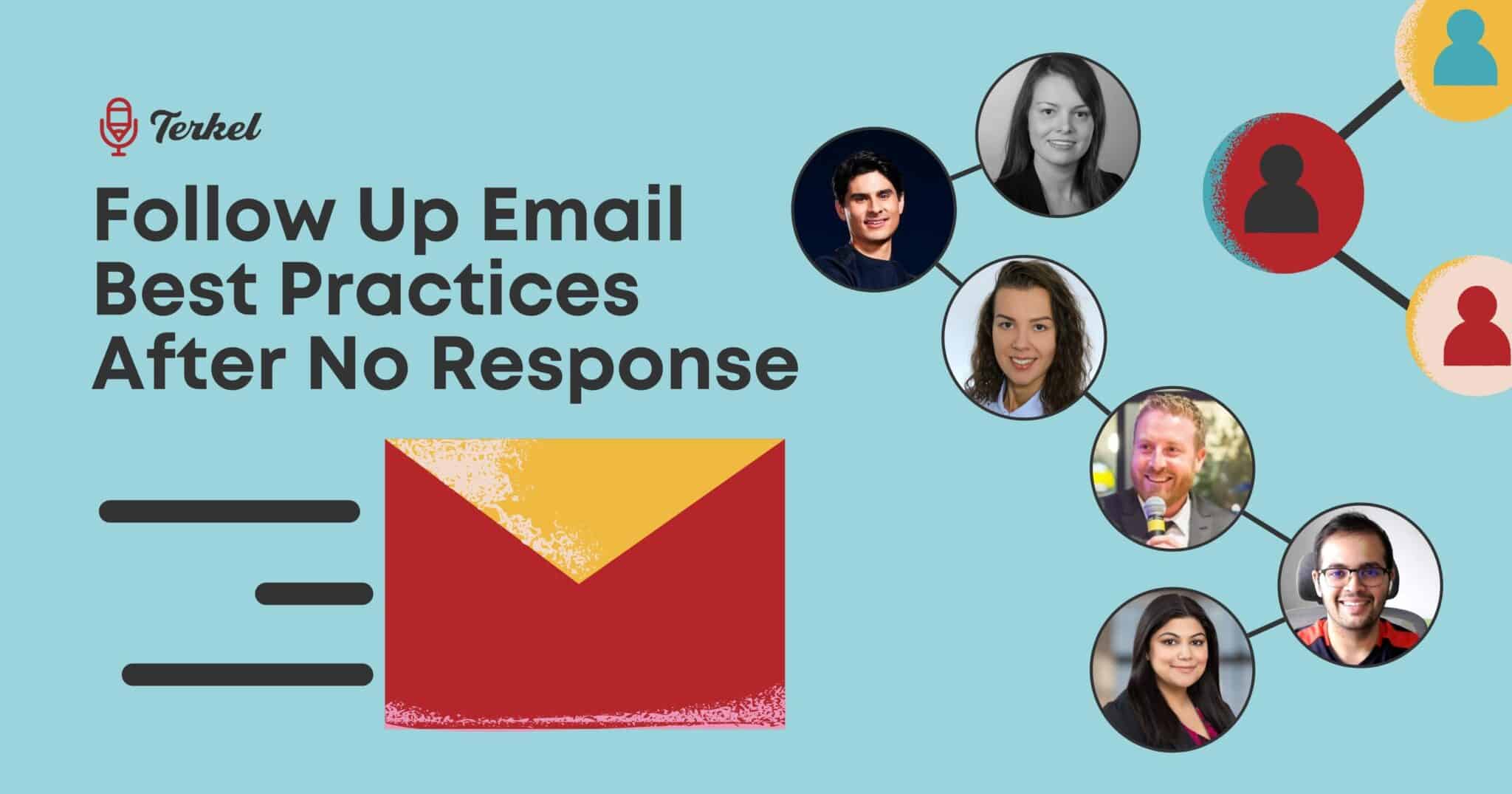What do you say when someone doesn’t respond to an email?
When should you follow up after no response? From remaining professional and courteous to not resending the first email, here are eight answers on how to send a follow up email after no response:
- Check to See Who is Looking at Your Emails
- Remain Professional and Courteous
- Use a Cute GIF in Your Follow Up
- Acknowledge their Time
- Keep the Email Short and Concise
- Write an Honest Subject Line for Follow Up Emails
- Mention at the Start Your Objective of Following Up
- Don’t Resend the First Email
Check to See Who is Looking at Your Emails
Follow-up emails can determine whether your email campaign is successful or not. But how do you send them so they are not spammy and don’t make people angry?
My advice is to check in your email marketing software to see who is looking at your emails. Recipients that have opened your email many times are more likely to respond to your request. They might have been initially interested in your email, but dropped it because they forgot or were busy. You can ping them to remind them about your message and see if their interest is there.
However, avoid saying that you’ve noticed that they opened your email multiple times. It’s information that you have thanks to your software, but you don’t want people to feel like you stalk them. In your follow-up email, try adding more value to your email by offering additional information and making it as personalized as possible. Doing so will increase your chances of getting a response to your follow-up email and create a relationship with your contact.
Dorota Lysienia, Community Manager, LiveCareer

Remain Professional and Courteous
The best way to follow up with a prospect who has failed to respond to your email is to remain professional and courteous while being persistent. You should never get angry or rude, no matter how long it takes for the prospect to respond, and you should always keep an open mind. It may be that the email never reached the correct person or that the prospect simply forgot to respond, and you never know when a random email could spark a change of heart. Be patient, be kind, and be persistent, and you may just find success.
Matthew Ramirez, Founder, Paraphrase Tool

Use a Cute GIF in Your Follow Up
One best practice for a follow up email after no response is to send a cute GIF. This makes the email more positive and less likely to be ignored. The GIF should be relevant to the context so that it does not appear out of place. For example, you could follow up the words “If you feel like this is not relevant to you…” with a GIF of a cat falling down the stairs or Homer from the Simpsons retreating into some bushes. Both GIFs mean you will leave them alone, but at the same time you will give them something funny to laugh at and they might reconsider your offer. In general, including a GIF in a follow-up email can help to get the recipient’s attention and increase the chances of receiving a response.
Natalia Brzezinska, Marketing & Outreach Manager, PhotoAiD
Acknowledge Their Time
Many companies receive hundreds of emails a day. This creates a lot of chaos in the inbox and can push your email down to the bottom. If you haven’t received a response, don’t assume that the prospect is intentionally ignoring you. This is a good best practice to follow because in your follow up email you can state “I know you must be busy, but here is why I’m reaching out”. It is usually effective in email marketing to be straight to the point and develop a kind understanding communication with the other side. This will yield high results and catch people’s attention and interest, making them more likely to respond.
Gregg Dean, Co-Founder and CEO, Layla Sleep
Keep the Email Short and Concise
It’s important to limit your follow up email to just a few short sentences or bullet points, as everything your prospect needs to know should’ve been included in your initial email. Your follow up email should be complimentary to your first, and never be a repeat of it as this can end up seeming like spam. Rather, your follow up should provide more value to your prospect, emphasize how working with you will be beneficial to them, and provide a call to action.
Bill Lyons, CEO, Griffin Funding
Write an Honest Subject Line for Follow Up Emails
Writing an honest subject line is one best practice for a follow-up email after receiving no response. Although you might be tempted, resist the urge to “embellish” your subject line. When you haven’t followed up on either of those steps with the prospect, using subject lines like “Re: Our meeting last week,” or “Following up on our phone call,” is lying and is never a good idea. Avoid attempting to mislead a potential customer into opening your emails and responding to them. Be sure to use uplifting, succinct, and clear subject lines. Use a phrase like “Bumping this in your inbox” to convey your message. This lets them know that you’ve already sent an email to them and that, in case they missed it, you’re sending one more. Another excellent choice that makes your prospect curious about what they might find inside is “Resources list for [business name]”. If you’ve already performed a demo with the prospect, choosing to say “Following up after the demo last week” will be simple.
Raviraj Hegde, Head of Growth, Donorbox
Mention at the Start Your Objective of Following Up
Start your email showing your intention of following up and getting their response this time. But make sure to do it subtly and carefully. You can say anything like, “I am aware that we have discussed this in the previous mail,…” or “We only recently connected, so I figured it was only fair that you know a bit more about our company.” These set a clear goal to establish communication without making the tone sound like a complaint or blame. Therefore, you should avoid openings like “Just following up to see whether you could read my last email.” Such introductions may suggest placing the blame for their silence, which is strictly forbidden in marketing.
Deepa Tailor, Owner and Founder of Tailor Law, Tailor Law

Don’t Resend the First Email
If you don’t get a response after sending an email, it’s often tempting to just hit “reply” and send the same message again. However, this is likely to come across as pushy and can actually discourage the recipient from responding. Instead, try sending a new email with different content. For example, you could mention something that’s happened since you last emailed, or ask a question that might elicit a response. By taking the time to craft a new message, you’ll demonstrate that you’re truly interested in hearing from the other person and are more likely to get the response you’re looking for.
Ludovic Chung-Sao, Lead Engineer & Founder, Zen Soundproof
Submit Your Answer
Would you like to submit an alternative answer to the question, “What is one best practice for a follow up email after no response?” Submit your answer here.
